 Previous Day |
Estella → Torres del Rio 26.6 km (16.5 mi) |
 Next Day |
¡Qué miragloso, todos!
This morning, I awoke to the third miracle of the Camino: my feet felt better! It’s amazing what a good night of sleep can do! I packed up my things and set out for what I decided would be a much shorter day to Arcos, but on the way out of Estella, I wanted to wander a little.
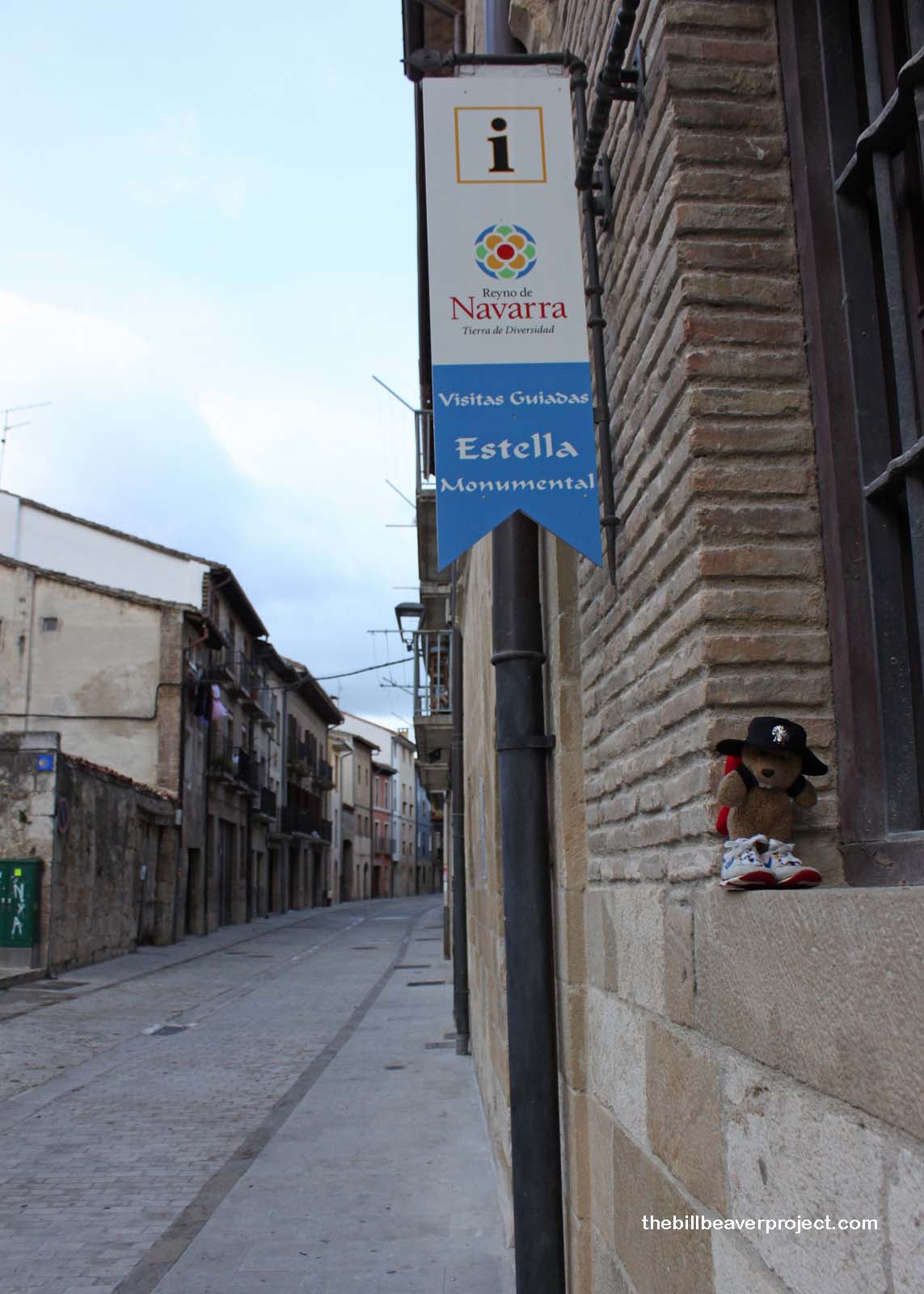 |
Did you know that Estella was originally a tiny town called Lizarra? In the 11th century, when the Camino route was being established, King Sancho Ramirez gave it a new charter and a new name. I’m not sure why he chose “Estella” instead of “Estrella,” since this is the star road. Maybe he just wanted to make some waves. After all, he instituted the Frankish privilege, which exempted Frankish traders from paying taxes if they settled in Estella!
It’s more likely, though, that he just wanted to add people to his domain: traders willing to defend their assets from conquest by Alfonso VI (ruler of Castilla, León, and Galicia) and Christians willing to fight for their land against Islamic settlers. The strategy seems to have worked, since Sancho Ramirez remained king of both Aragon and Navarra until he died trying to take the city of Huesca. Meanwhile, Estella grew under the influx of merchants from all different backgrounds and cultures but did not officially become a city until a mysterious event took place.
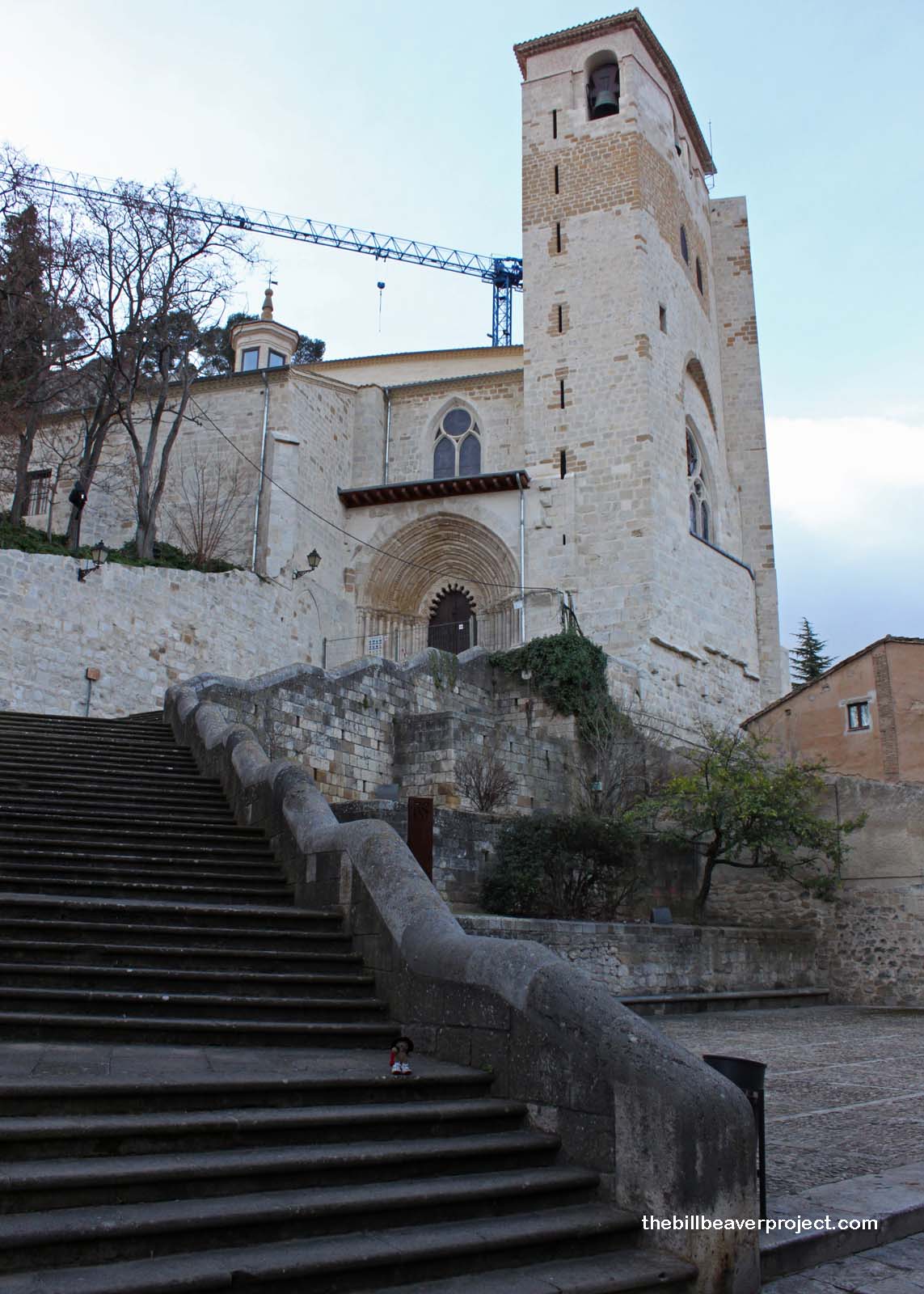 |
According to legend, in 1270, mysterious lights appeared over the tomb of an unnamed peregrino in the Iglesia de San Pedro de la Rúa! Now, instead of calling the Ghostbusters or buying a bunch of Foo Fighters CDs, the people of Estella decided to open the tomb. There, they discovered a body buried with wine vessels for Mass, a box containing a shoulder blade, and a crozier (a bishop’s staff). They realized that the nameless man, who had died the night before, had been the Bishop of Patras, and that this shoulder blade, in all likelihood, had once helped Saint Andrew skip stones! So, instead of finishing the Bishop’s journey to donate the relic to the cathedral at Santiago, the townsfolk kept it and made Saint Andrew one of the patrons of Estella. I guess sometimes stones don’t skip as far as you thought they would!
The church was still being excavated this morning, so I couldn’t see the bishop’s tomb. Isn’t it neat, though, that there can still be new discoveries in such an old church?!
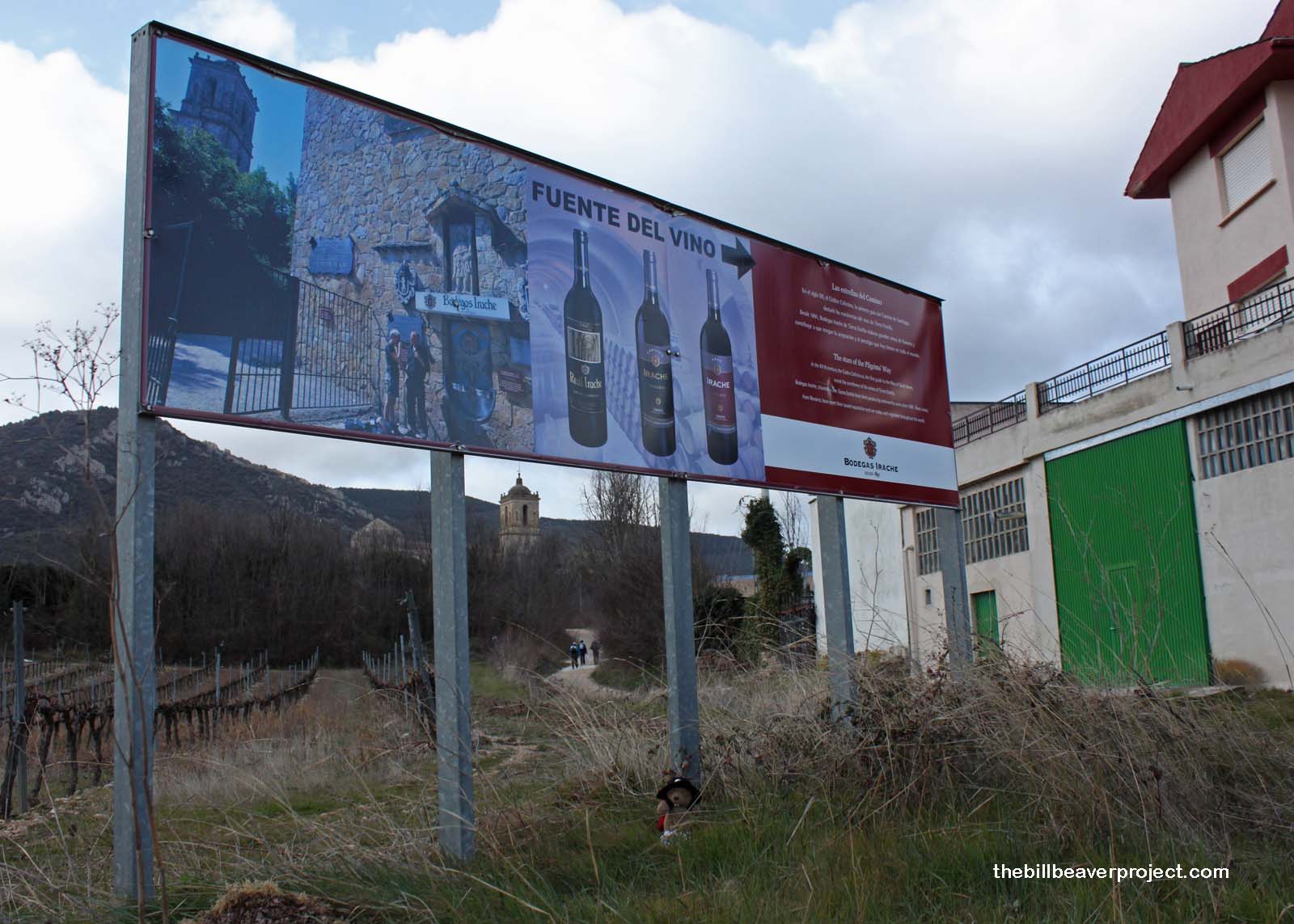 |
On the way out of town, I found a sign for a Fuente del Vino! I’m not normally a big partaker of magical beverages, but a whole fountain of wine? Who wouldn’t be curious? As I found out, the wine fountain was installed by the Monasterio and Bodega de Irache in 1991 for the centennial of the Bodega’s founding. The monastery itself had been around since the 12th century and was the first hospital for peregrinos on the Camino! Now, it offers a free sip of wine to all peregrinos so they will have enough strength to get to Santiago!
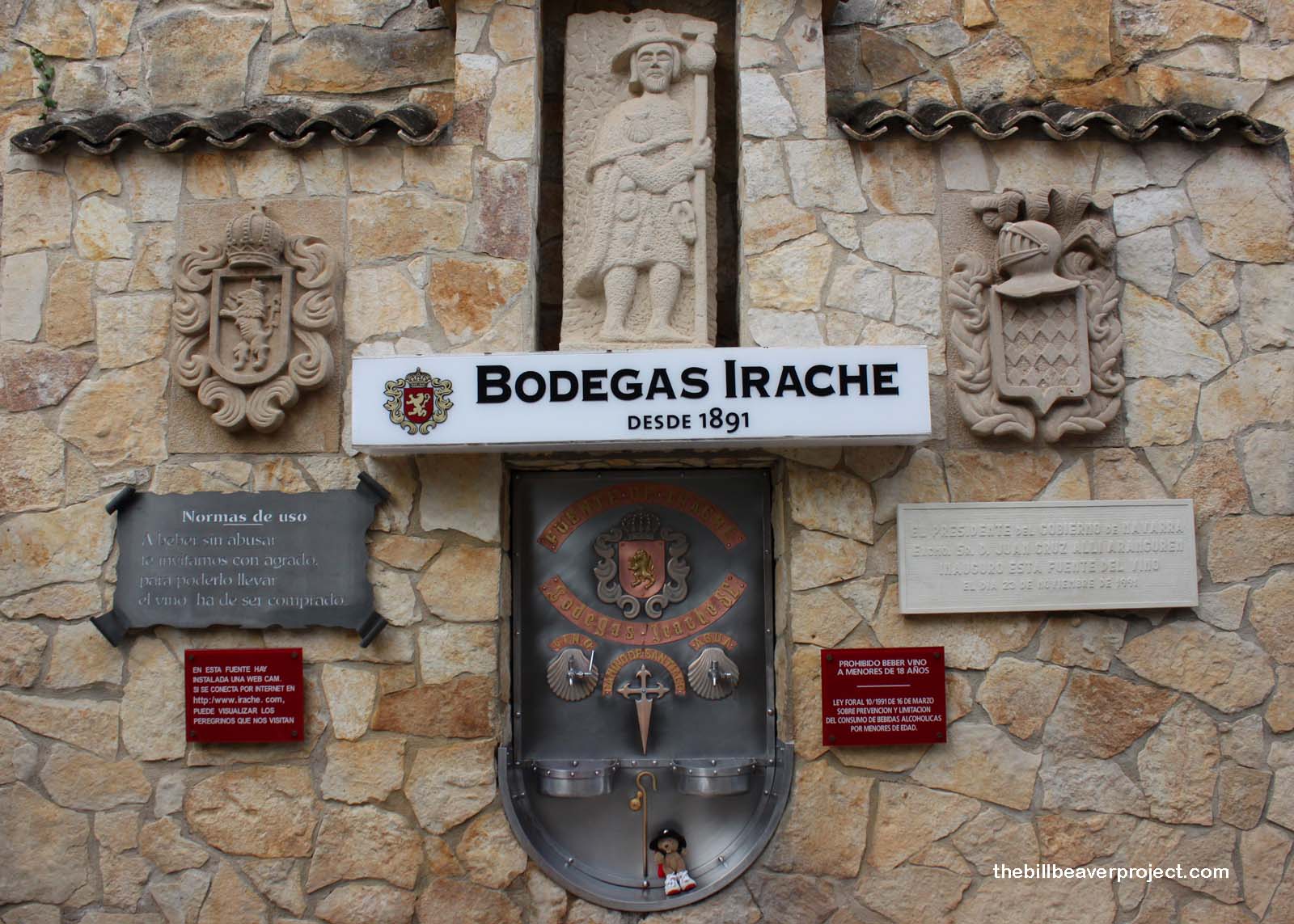 |
The new tradition is to take a sip of the wine from a scallop shell and make a toast to happiness. Unfortunately, scallop shells are bigger than my whole backpack, so I used my hat instead. My goodness, I felt funny afterward! I got all giggly, and I ended up losing track of the arrows right after the monastery! Oh no!
I did a lot of backtracking and looping around, walked a roundabout on the road, and finally decided to ask directions at the next bodega. Before I could reach the bodega, though, I spotted an arrow leading off into the woods! I hustled down the path, under the freeway, and up into a pasture, where I lost the arrows again. By now, I was so confused and frustrated, but still giggly, that I spotted the next town of Azqueta in the distance and bushwhacked the rest of the way! By the time I arrived, I found another arrow leading to town from a completely different route that I hadn’t even seen. A passing peregrino was astonished that I could have possibly gotten lost! Let that be a lesson to us all: A hat full of wine and you’ll miss every sign!
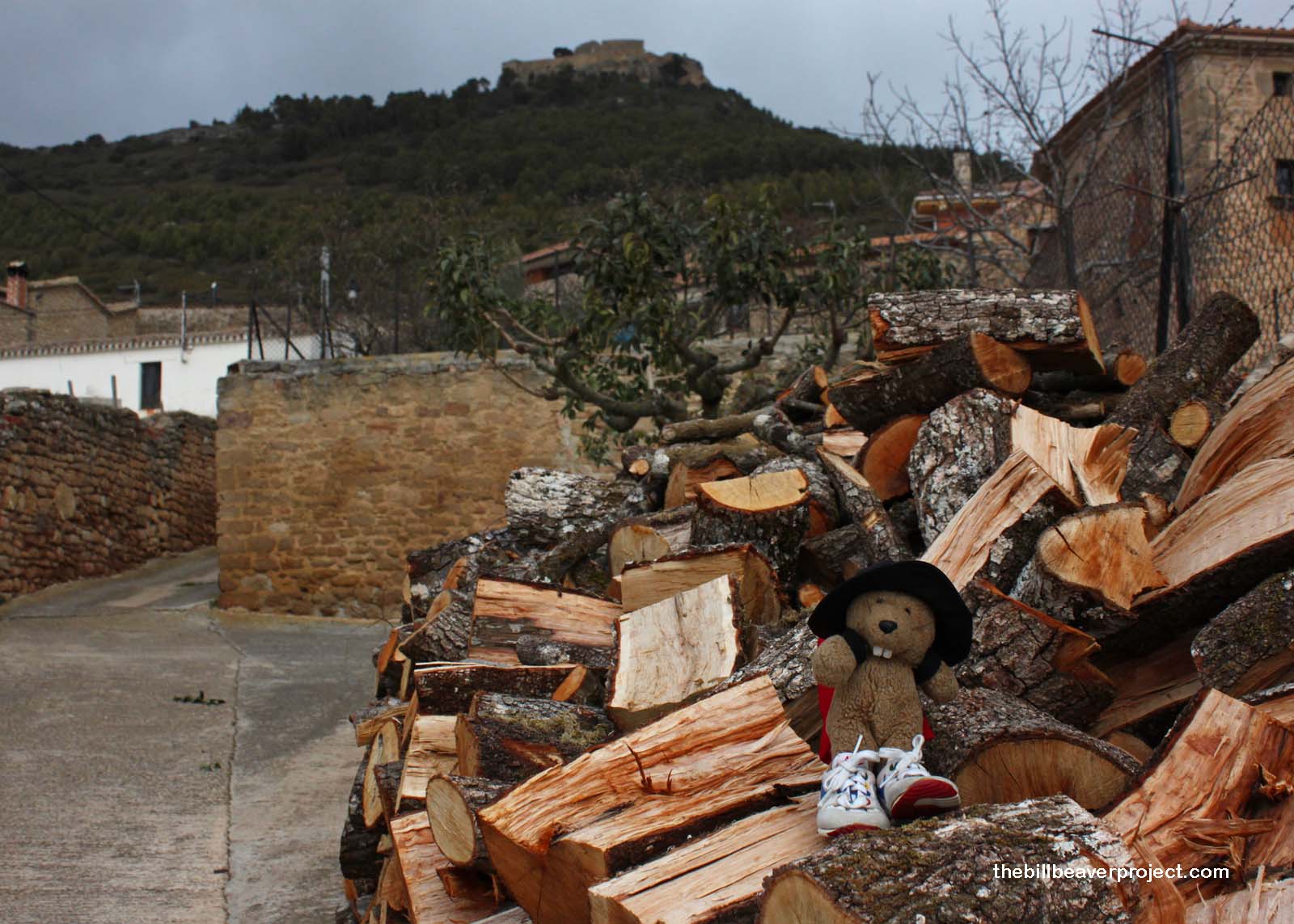 |
Now back on track and half bursting with adrenaline, I cruised into Villamayor de Monjardin, where my attention was immediately drawn to the mountaintop ruins of the Castillo de San Esteban de Deyo. No one knows for sure when this castle was built, but it may have been a stronghold for the Romans in their conquest of Navarra and later used by Charlemagne in his campaign against the Moors! I would have loved to climb up for a better view and would have done just that in any other situation, but I didn’t want a repeat of yesterday! No sir! Or ma’am…
 |
The next stage of the Camino can only be described as a test of willpower, because the 12K between Villamayor de Monjardin and Los Arcos was a vast stretch of emptiness. The only source of excitement was the ongoing war between sun and rain up in the sky, which finally settled with the signing of the Treaty of Gloomy Clouds. That isn’t to say there was nothing between the towns. In fact, as I walked, there were numerous signs offering information about the area’s history. However, they were so heavily vandalized (shame on the vandals!) that all I could glean from them were the words “Battle,” “Charlemagne,” and “Hombres Verdes.”
I believe that Charlemagne’s forces camped here during their campaign to take possession of the Castillo in 778 AD. As for the Hombres Verdes, or “Green Men,” I had apparently walked past a whole bunch of them and not even realized it! They had been hiding in the walls, watching me pass, and didn’t even say “Hola!” That’s probably because they were made of stone! “What were they doing there?” you may very well ask.
As early as 1,000 BC, northern Spain was actually inhabited by Celts (yup, the same ones that made Ireland famous)! The Celts left all sorts of traces of their civilization across Iberia, including the green men. Green men are faces made of, and sometimes vomiting, leaves and branches! They appear mostly on church walls and can be found across Spain, France, and the UK primarily, but they are present in different forms all across the world. Here, they represent a compromise between ancient, naturalistic beliefs and the Christianity that supplanted them. Apparently, there were a whole bunch of green men at the Monastery of Irache and the Basilica of the Virgin of Le Puy in Estella! It’s too late for me to see them now, but now that I know what they are, I’ll be sure to look for them in the future!
That future seemed pretty far away as the path stretched on and on, and I was starting to get hungry! That’s when I ran into two more signs of Celtic presence: Olga from Ireland and Alexandra from Wales! They were taking a snack break and shared their cheese and cookies with me! They also introduced me to the simple pleasure of a fifteen-minute shoe break, which was exactly what I needed to get going again! Just as we got back on our feet, a car drove by, and a man named Antonio leaned out and gave us flyers for the albergue La Pata de Oca in Torres del Rio, which was an extra 7K beyond Los Arcos. It seemed awfully nice, but was I ready to add on 7K? The town of Los Arcos answered that question right away: it was a totally dead town! Really, most of the towns have been dead so far, possibly because of the season, possibly because unemployment in Spain is the highest it’s been in fifteen years!
That last 7K was even more difficult than yesterday’s 8K from Lorca to Estella. I was tired, hungry, and staring directly at the next town of Sansol for over an hour of walking, knowing that it wasn’t my final stop! I was very happy to have Olga around, telling me about her experiences teaching farm children in Ireland and learning how to make a proper “heap o’ spuds,” but my goodness, I was a mess when we finally arrived in Sansol then had to pass through!
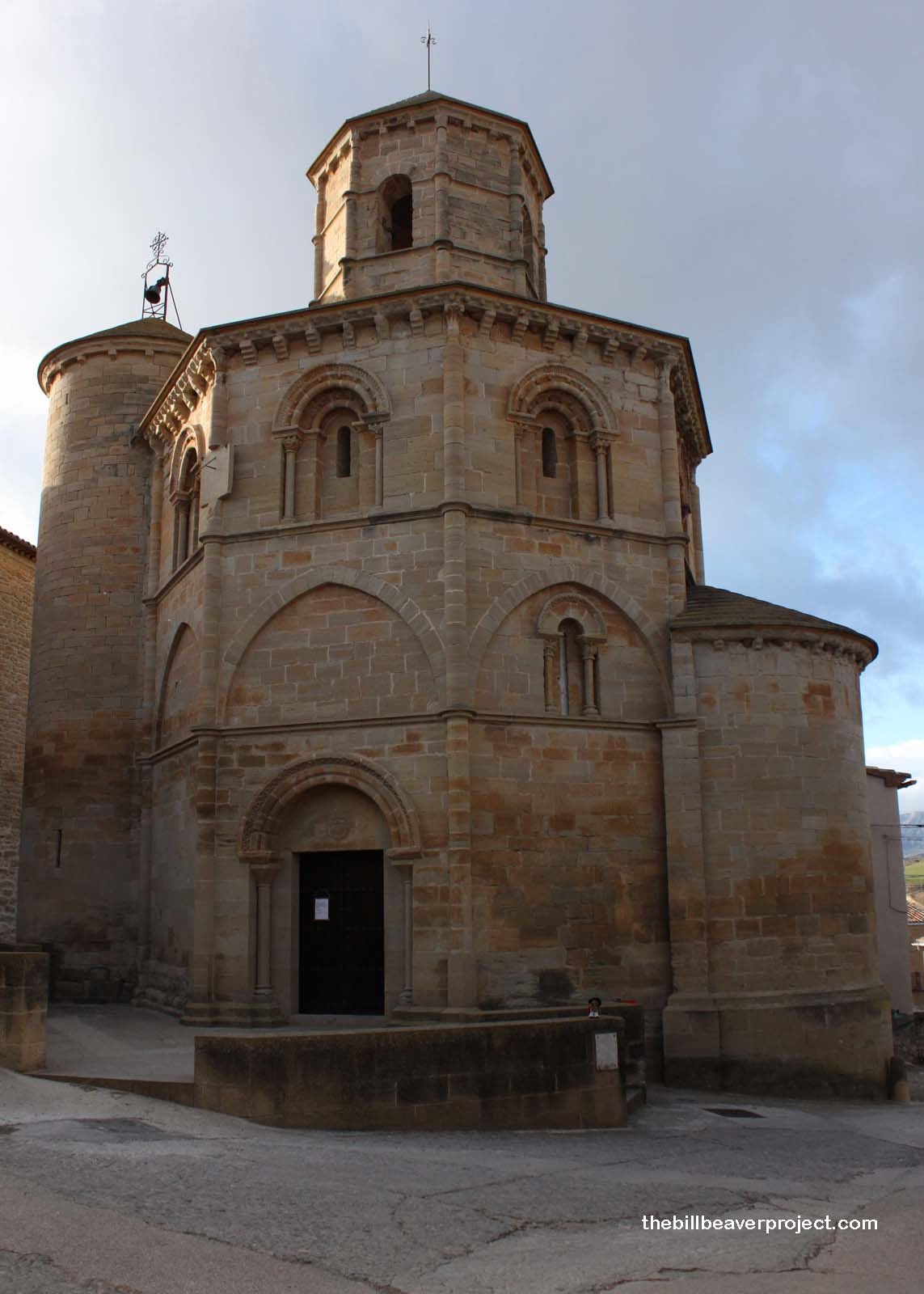 |
Luckily, it wasn’t that much further to Torres del Rio, and once there, I did take a moment to admire the 12th-century Iglesia del Santo Sepulcro, my first introduction to the Romanesque and mudéjar styles of architecture! Phrased another way, the church was octagonal and made of bricks! You can guess the origins of Romanesque, but did you know that mudéjares were Muslims allowed to stay in Spain after the Reconquista? The Arabic word for “permitted to stay” is muddajjan!
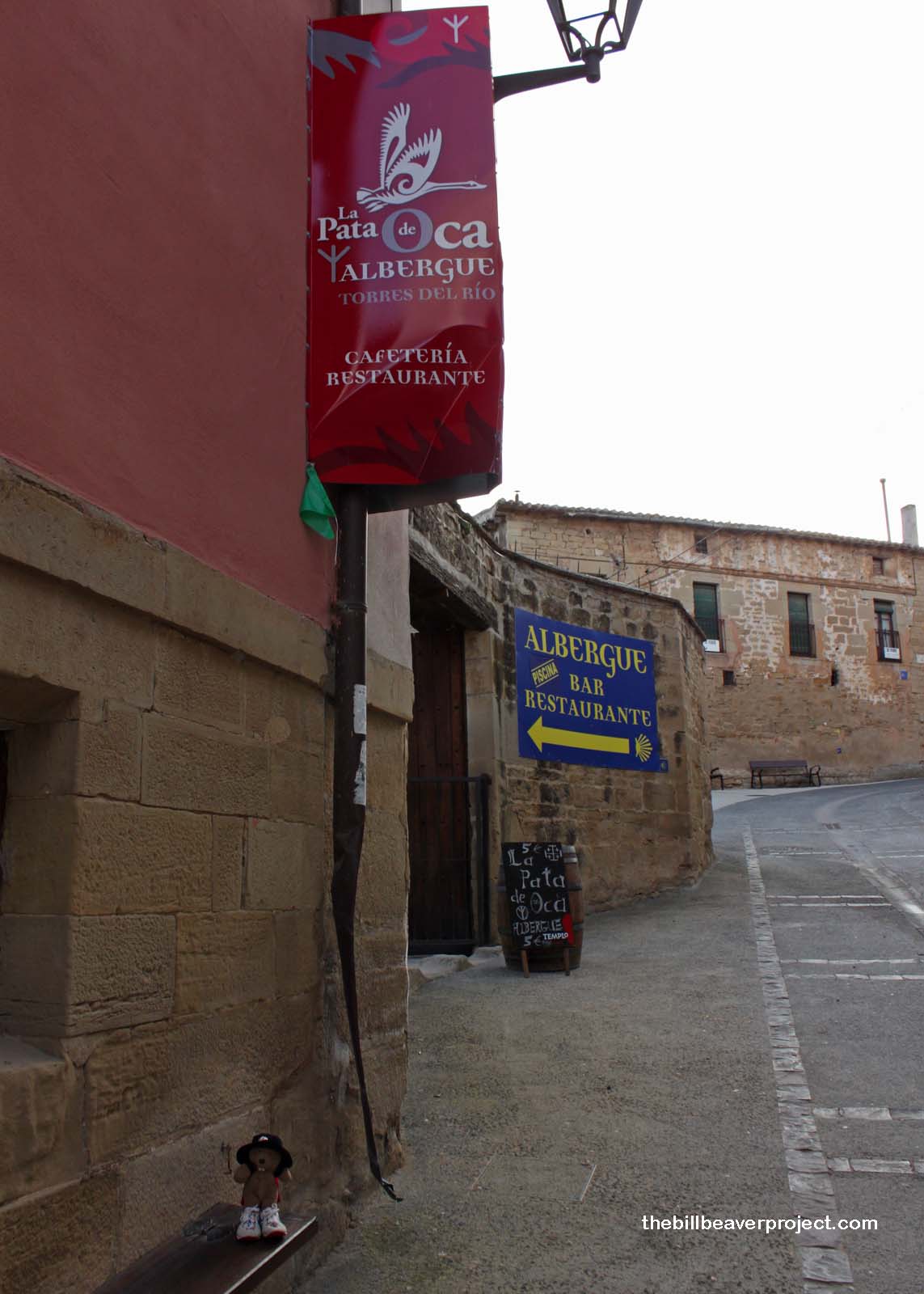 |
We decided the albergue La Pata de Oca would be worth checking out, and sure enough, Antonio greeted us warmly at the entrance then showed us to our beds, let us use the icy showers, and made us a huge dinner! However, the big surprise of the night was that Antonio wasn’t actually the hospitalero! Antonio was a professional peregrino who was helping out! See, a few years ago, he was the cook on a ship that capsized. As the only survivor, he made a pledge to the Virgin Mary to walk all the holy routes of the world and has already walked over 100,000 kilometers!
Now, on the Camino, he travels from albergue to albergue, works for a while as a cook, and continues on to the next stop, relying entirely on the goodness of others for his sustenance! The fact that he’s still alive, kicking, and in great humor should say something about human kindness! He even donned a full suit of chain mail, kept in the back of this Templar-themed albergue, pulled a sword from the wall, and knighted me! So you can now call me Sir William of Incheon!
So I walked a bit further than expected today, and I received another valuable lesson in endurance: I’m stronger than I sometimes think I am! If my feet feel better again tomorrow morning, maybe I will be able to go even further! Jean and Andrew showed up at dinner, and they’re still hanging in there with more foot problems than I have. Perhaps my original schedule is about to go out the window! I’ve never let my plans drop like that that before. Who knows what will happen?!
Buen Camino!

 Previous Day |
Total Distance Walked: 149.9 km (86.9 mi) |
 Next Day |
